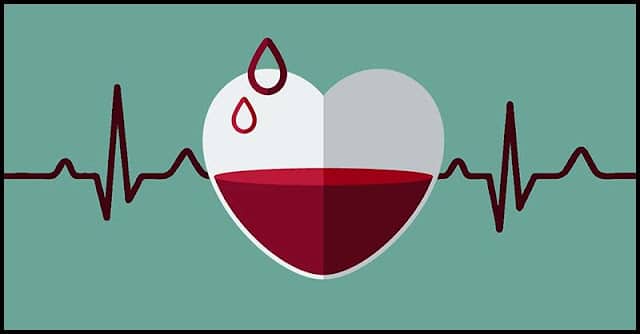Iron is an important mineral needed by the body. Without it, many bodily functions would not be able to do its works.
According to Bethany Thayer, RDN, MS, director of the Center for Health Promotion and Disease Prevention at Henry Ford Health System in Detroit:
“The primary role of iron is to carry oxygen in the blood to every cell in the body,”
Iron is needed to make hemoglobin, the substance in red blood cells that carries oxygen from your lungs to transport it throughout your body.
If your body doesn’t have enough hemoglobin, your tissues and muscles won’t get enough oxygen and be able to work effectively. This leads to a condition called iron deficiency anemia.
Paul Thomas, EdD, RD, a scientific consultant to the National Institutes of Health, Office of Dietary Supplements says:
“If you’re not getting sufficient oxygen in the body, you’re going to become fatigued.”
This can affect different parts of your body from your brain function to the ability of your immune system to combat infections.
Aside from this, iron also has other important function. According to Elaine Chottiner, MD, clinical assistant professor and director of General Hematology Clinics at the University of Michigan Medical Center:
“Iron is also necessary to maintain healthy cells, skin, hair, and nails.”
What causes Iron Deficiency Anemia?
- Frequent blood donation
- An iron-poor diet, especially in infants, children, teens, vegans, and vegetarians
- Endurance training
- Menstruation
- Certain foods, drugs, and caffeinated drinks
- The metabolic demands of pregnancy and breastfeeding that deplete a woman’s iron stores
- Digestive conditions such as Crohn’s disease or surgical removal of part of the stomach or small intestine
- Internal Bleeding
- Inadequate Iron Intake
Iron deficiency anemia is quite common. At any stage, it can appear in both men and women. However, many people are not aware that they develop it. Those who are at higher risk for iron deficiency anemia are the following:
- People who frequently donate blood
- Malnourished people from developing countries
- Young children
- People with illness and surgery-related bleeding complications
- Pregnant women and women of childbearing years
- Vegetarians who don’t replace meat with other iron-rich foods or people who have a poor diet
Symptoms Of Iron Deficiency
Iron deficiency anemia can result in unpleasant symptoms that can affect the quality of life. Here are the signs of anemia that might surprise you.
Constant Infections
Lower levels of iron make a person’s immune system weak, thus making him more susceptible to infections.
Red blood cells help transport oxygen to the spleen which is one place wherein infection can be fought off. Aside from this, it also carries oxygen to the lymph nodes which contain white blood cells that fight infections.
Extreme Fatigue And Exhaustion
Your energy levels can be affected when your body is having trouble carrying oxygen to the cells. This will make you often feel weak, sluggish, and unable to focus. If it does not go away with adequate rest, consider having your iron levels checked.
Restless Legs Syndrome
Restless legs syndrome is a disorder that causes you to have a strong urge to move your legs, which is often associated with unpleasant, crawling sensation in the legs, thus making it hard to sleep.
Swollen Tongue
You may notice changes in your tongue, such as swelling or soreness. Others may even experience cracks on the side of the mouth, which is also common to people with iron deficiency.
Hair Loss
When hair follicles are not getting enough oxygen, it can cause hair loss and it won’t grow back until the anemia improves.
Actually, it is normal to lose about 100 strands of hair per day. But, if you think that you are excessively losing hair and it’s not growing back then, this may be a sign of iron deficiency.
Pica
Pica is a condition wherein a person develops cravings for non-food substances, such as chalk, clay, or dirt. Eating these substances may lead to the ingestion of harmful toxins and substances and can actually interfere with the absorption of iron.
Pale Skin
Hemoglobin is responsible for the rosy color of your skin. That’s why, once your body has low levels of hemoglobin, your skin becomes lighter. Red blood cells become smaller and paler when the body is low in iron and this often translates to the skin.
Foods That Are Very High In Iron
Here is the list of good food choices that will help meet your daily iron needs:
- Spinach
- Liver and other organ meats
- Legumes
- Pumpkin seeds’
- Quinoa
- Turkey
- Lentils
- Tomato Paste
- Potatoes
- Mushrooms
- Olives
- Mulberries
- Coconut Milk
- Dried Thyme
- Broccoli









